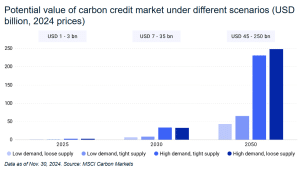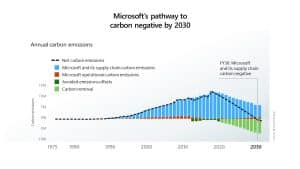United Airlines Invests in Twelve for Sustainable Aviation Fuel
United Airlines is taking a bold step toward cutting its carbon footprint by investing in Twelve, a California-based company that makes Power-to-Liquid (PtL) fuels. This move is part of United’s Sustainable Flight Fund, and it supports the airline’s goal of cutting aviation emissions by 90% by 2050. The fund is designed to back new ideas that can make air travel cleaner.
Turning CO2 into Jet Fuel: How Twelve’s Tech Works
Twelve has built a new way to make jet fuel that doesn’t rely on crops, waste oils, or fossil fuels. Their patented process takes carbon dioxide (CO2) captured from the air or factories and mixes it with renewable electricity (like solar or wind power). The result is a liquid fuel that works like regular jet fuel but with much lower emissions.
This carbon transformation method creates a closed-loop carbon cycle. That means the CO2 used to make the fuel is the same CO2 released when planes burn it — no extra carbon is added to the atmosphere. By closing this loop, Twelve’s process helps slow climate change and reduces the need to pump new fossil fuels from the ground.
It also fixes another problem. Many traditional types of Sustainable Aviation Fuel (SAF) use materials like used cooking oil, animal fats, or crops such as corn and sugarcane. These feedstocks are limited and can be hard to get in large amounts. They also raise ethical questions about using farmland for fuel instead of food.
Twelve’s technology skips these issues entirely, making it easier to grow the SAF supply in the long run.
United’s investment comes after Twelve raised $83 million in its recent Series C funding round. The company is also building its first commercial facility, called AirPlant™ One, in Moses Lake, Washington. The plant will start operating this year and will produce 50,000 gallons of sustainable aviation fuel each year.
Backing the Future: United’s Sustainable Flight Fund
United Airlines is serious about finding new ways to make flying greener. The airline launched the Sustainable Flight Fund in 2023, raising over $200 million so far. Partners in the fund include Air Canada, Boeing, JPMorgan Chase, and other major companies.
The goal of the fund is to help new SAF projects grow faster. By putting money into companies like Twelve, United hopes to build up the supply of cleaner fuels and cut emissions without relying heavily on buying carbon offsets.
United is also unique among U.S. airlines for its long-term SAF focus. The company has invested in over 5 different SAF developers, including Fulcrum BioEnergy and Cemvita Factory. With these moves, United aims to secure steady supplies of SAF for its future flights.
Andrew Chang, head of United Airlines Ventures, noted:
“Scaling the SAF industry is the major hurdle air travel needs to clear in order to increase the supply and reduce the price of lower carbon fuels. Twelve has differentiated themselves through the capital they have raised and the SAF contracts they have secured.”
Why SAF Is So Important (and Growing Fast)
The aviation industry is under pressure to cut emissions. Planes account for about 2.5% of global CO2 emissions today, and demand for flights is still growing.
- The International Air Transport Association (IATA) says airlines used only 300 million liters of SAF in 2022, but demand could grow to 7 billion liters by 2030.
That’s a huge jump, showing just how important SAF is becoming. Some key facts to know about this jet fuel:
- Today, SAF makes up less than 1% of all jet fuel used globally.
- Experts think the SAF market could be worth over $15 billion by 2030.
- SAF can lower lifecycle emissions by up to 80% compared to fossil jet fuel.
Annual SAF demand range over the main and accelerated cases compared with capacity potential, 2020-2026

Even though SAF is good for the planet, it still costs 3 to 5x more than regular jet fuel. That’s why government policies are helping. For example, the U.S. Inflation Reduction Act (IRA) offers tax credits for low-carbon fuels, making SAF cheaper to buy. The European Union also passed rules requiring airlines to use increasing amounts of SAF starting in 2025.
Many believe that as technology improves and more SAF is made, costs will drop to match regular fuel prices by the early 2030s.
How Twelve Fits into the Bigger Picture
Twelve is one of the few companies working on Power-to-Liquid (PtL) SAF, which uses only CO2 and clean energy instead of crops or oils. This means their fuel can be scaled up faster without competing for food or farmland.

In 2023, Twelve opened its first demonstration plant in Moses Lake, Washington, to show that the technology works. Their long-term plan is to build bigger facilities that can produce millions of gallons of PtL SAF each year.
The U.S. Department of Energy has recognized PtL as a promising option for deep decarbonization. Studies show PtL fuels could cut aviation emissions by up to 90%, depending on how clean the electricity source is.
For United, working with Twelve is more than just cutting emissions — it’s about staying ahead of competitors. Many airlines still depend on buying carbon offsets to meet their climate goals. United wants to lead with direct emission cuts, which experts say is a stronger, more reliable strategy.
What Other Airlines Are Doing
United isn’t the only airline betting on SAF:
- Delta Air Lines partnered with Gevo to buy 385 million gallons of SAF over seven years.
- American Airlines signed a deal with Aemetis for 350 million gallons over 10 years.
- Lufthansa, KLM, and British Airways are also working with SAF producers like Neste and Velocys.
However, most of these deals are focused on SAF made from used cooking oil, fats, and biomass — not PtL. United’s early and large investment in Power-to-Liquid SAF sets it apart from airlines still relying mostly on crop-based or waste oil SAF.
What’s Next? A Greener Future for Aviation
The future of flight is changing fast. Analysts predict that investments like United’s could speed up a major shift in aviation. As governments around the world set stricter rules on emissions and offer more support for low-carbon technologies, SAF use is expected to soar.
If SAF production grows as hoped, airlines could shrink their carbon footprints by 40% to 70% in the next 20 years.
United’s investment in Twelve and other clean fuel companies shows it’s not just following the trend — it’s trying to shape the future of sustainable travel. The airline’s plan is to use a mix of SAF sources, from waste oils to PtL fuels, to make sure it can meet rising demand.
The post United Airlines Invests in Twelve for Sustainable Aviation Fuel appeared first on Carbon Credits.


































